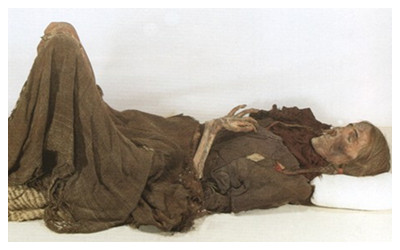Skype: neodalle-travel
Tel: +86 135 7447 2266
E-mail: sales@zhangjiajieholiday.com
History of the Tarim Basin
Xinjiang consists of two main geographically, historically, and ethnically distinct regions with different historical names, Dzungaria and the Tarim Basin (Altishahr), before Qing Dynasty of China unified them into one political entity called Xinjiang province in 1884. At the time of the Qing conquest in 1759, Dzungaria was inhabited by steppe dwelling, nomadic Tibetan Buddhist Dzungar people, while the Tarim Basin (Altishahr) was inhabited by sedentary, oasis dwelling, Turkic speaking Muslim farmers, now known as the Uyghur people. They were governed separately until 1884.
 Tarim mummies are a series of mummies discovered in the Tarim Basin in present-day Xinjiang, China, which date from 1900 BCE to 200 CE. Some of the mummies are frequently associated with the presence of the Indo-European Tocharian languages in the Tarim Basin, although the evidence is not totally conclusive. Research into the subject has attracted controversy, due to ethnic tensions in modern day Xinjiang. There have been concerns whether DNA results could affect claims by Uyghur peoples of being indigenous to the region. In comparing the DNA of the mummies to that of modern day Uyghur peoples, Victor H. Mair’s team found some genetic similarities with the mummies, but no direct links, stating that “modern DNA and ancient DNA show that Uighurs, Kazaks, Krygyzs, the peoples of Central Asia are all mixed Caucasian and East Asian… the modern and ancient DNA tell the same story.”
Tarim mummies are a series of mummies discovered in the Tarim Basin in present-day Xinjiang, China, which date from 1900 BCE to 200 CE. Some of the mummies are frequently associated with the presence of the Indo-European Tocharian languages in the Tarim Basin, although the evidence is not totally conclusive. Research into the subject has attracted controversy, due to ethnic tensions in modern day Xinjiang. There have been concerns whether DNA results could affect claims by Uyghur peoples of being indigenous to the region. In comparing the DNA of the mummies to that of modern day Uyghur peoples, Victor H. Mair’s team found some genetic similarities with the mummies, but no direct links, stating that “modern DNA and ancient DNA show that Uighurs, Kazaks, Krygyzs, the peoples of Central Asia are all mixed Caucasian and East Asian… the modern and ancient DNA tell the same story.”
 Ask Questions ?
Ask Questions ?